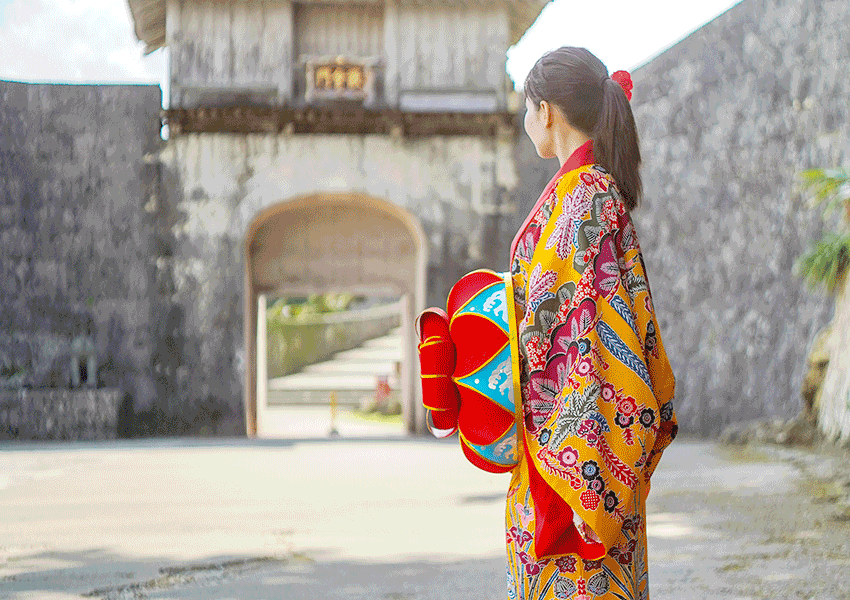Okinawa Prefecture has a particularly unique culture and history within Japan.
While the "kimono"(着物) is one of the traditional Japanese garments, Okinawa has a unique traditional costume called "ryuso" (琉装).
In this article, I, an Okinawan resident, will tell you about the traditional costumes of Okinawa Prefecture and the places where travelers can wear traditional costumes.
"Ryuso" is the name for traditional Okinawan attire
The name of Okinawan traditional costume is not "kimono" but "ryuso".
Ryuso was the formal dress of the Ryukyu Kingdom (1429 - 1879), and it is a garment that has developed uniquely while being influenced by Chinese and Japanese kimonos. In the Okinawan language, it is called "Uchinasugai."
To a foreigner, ryuso may seem like a type of traditional Japanese kimono, but ryuso and kimono are very different in terms of colors, fabrics, and the way they are worn.
▼ Differences between kimono and ryuso
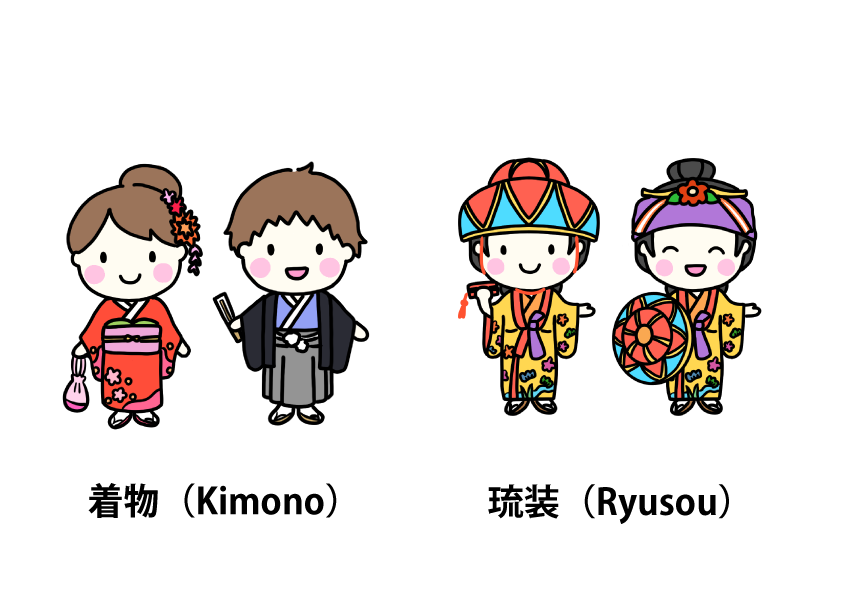
The above illustration is an image of a kimono and a ryuso, but you can see the difference in the way they are worn and the coloring.
Ryuso is a traditional attire unique to Okinawa.
Ryuso, the gorgeous traditional attire of Okinawa that people today imagine, was worn by royalty, aristocrats, and other people of high status in the Ryukyu Kingdom period.
When Okinawa was the Kingdom of the Ryukyus, not Japan, in the 16th century, a status system was established in Okinawa, and the colors, patterns, fabrics, and other types of clothing were differentiated according to status and class.
Ryuso has wide cuffs, and women's ryuso has a unique way of dressing that does not tighten around the waist.
This is an ingenious way to improve ventilation for the hot climate of Okinawa, a tropical country.
The vivid colors of ryuso and the way the cloth is dyed are deeply related to Okinawa's history and climate, making it a traditional garment unique to the tropics.
Bingata: the traditional dyeing technique of Okinawa
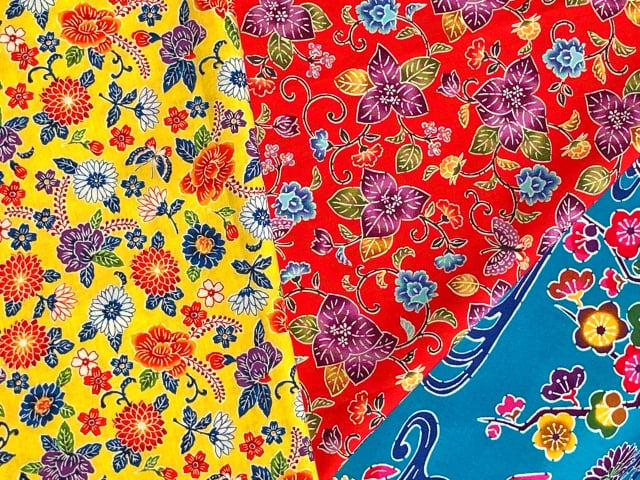
The brightly colored dyed fabrics that you may associate with Okinawa's traditional costumes are called Bingata.
Bingata is a traditional dyeing technique that originated in the Ryukyu Kingdom period, where "bin" means color and "gata" means pattern.
The reason why Bingata is so colorful has to do with the strong sunlight of Okinawa, a tropical country.
The pigments used in Bingata dyeing are insoluble in water and oil and have excellent light and water resistance.
Compared to most dyes, which tend to fade when exposed to light for long periods of time, pigments have large particles that are fixed to the surface of the fabric, resulting in vivid colors.
They are also resistant to ultraviolet rays, and their clear colors do not bleed through even when colors are layered.
The strong sunlight in Okinawa led to the use of vividly colored pigments.
Ryusos were worn by royalty and aristocrats of the Ryukyu Kingdom
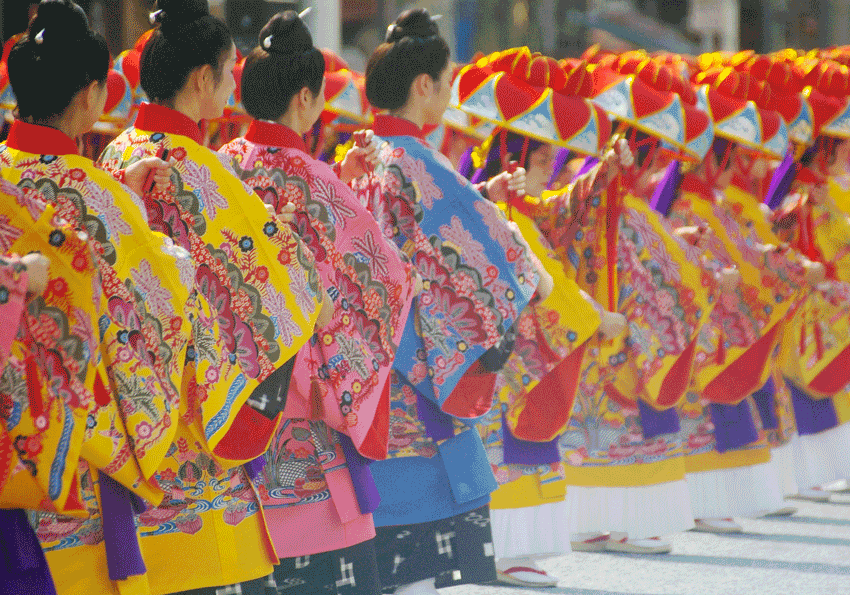
When most Japanese hear of traditional Okinawan costumes, they imagine bright yellow or light blue.
However, during the Kingdom of the Ryukyus, when ryuso was worn, class was distinguished by color, so not everyone could enjoy fashion as they wished.
For women, yellow was the highest color, followed by light blue and light red.
For men, yellow was the highest color, followed by purple, sky blue, indigo, and so on. The colors of clothing that could be worn were clearly determined according to status.
Therefore, in reality, there were not many people walking around the streets of Okinawa wearing colorful and beautiful traditional costumes as shown in the above image.
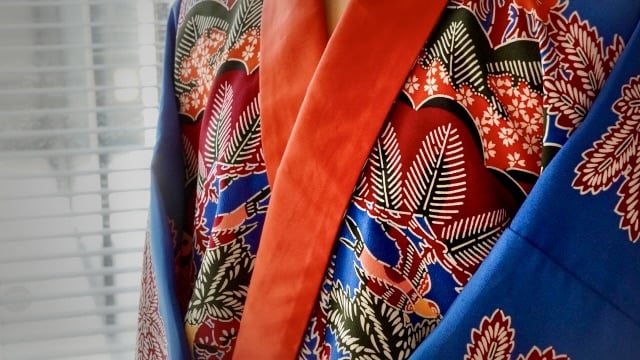
Also, while the ryuso worn by people of high rank were gorgeous and made of fine silk, colored threads and elaborate fabrics were not allowed to be used except for nobles and royalty.
The wearer's status could be determined by what he or she wore: "Wearing something with a large pattern = high status" or "Wearing something simple with few patterns and decorations = low status".
In modern Japan, people can freely enjoy fashion as they like.
It may seem obvious that we can enjoy fashion freely, but it is probably a very precious thing.
There are places where tourists can wear ryuso!

In Okinawa, there are places where you can wear ryuso, the traditional Okinawan costume.
I will introduce facilities where you can experience ryuso in Okinawa Island and Ishigaki Island respectively.
1. Okinawa World

(Source:Okinawa World Official Site)
At the theme park "Okinawa World" located in Nanjo City, south of the main island of Okinawa, you can experience ryuso at the Ryukyu photo studio in the facility.
The cost per costume starts at 1,000 yen, and children's sizes are also available, so children as young as 0 years old can wear a ryuso.
Wearing a Ryukyuan costume and walking around the Ryukyu Kingdom castle town in Okinawa World, you will feel as if you have time-traveled back to the days of the Ryukyu Kingdom.
You can take as many pictures as you like, so this is also recommended for those who want to upload their pictures on social media such as Instagram.
You will be able to take great pictures with the typical Okinawan scenery in the background.
There are a wide variety of costumes, so please try to find your favorite Ryukyuan costume.
Okinawa World
Address: 1336 Maekawa, Tamaki, Nanjo City, Okinawa, Japan
Phone:098-949-7421
Business hours: 9:00 am - 5:30 pm (last admission at 4:00 pm)
Admission: Adults 2000 yen / Children 1000 yen
Official website:https://www.gyokusendo.co.jp/okinawaworld/
2. Ishigaki Yaima Village
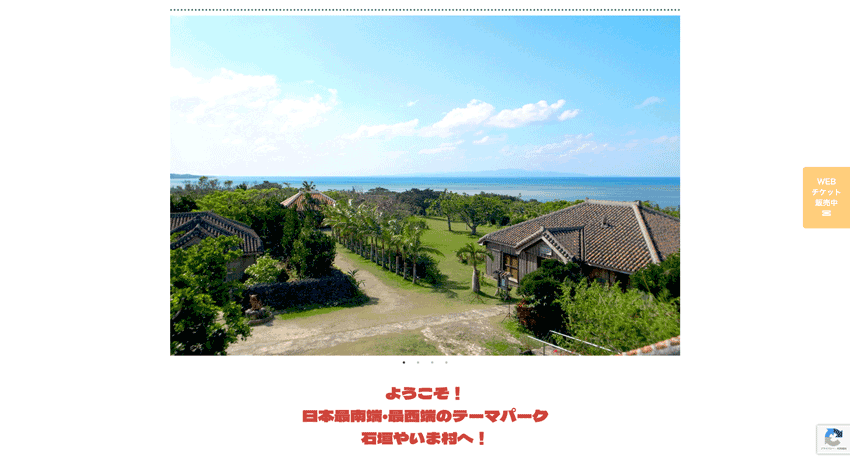
(Source: Ishigaki Yaima Village Official Site)
There is also a place on Ishigaki Island where you can experience ryuso.
At the theme park "Ishigaki Yaima Village," you can enjoy the history and culture of Okinawa and Yaeyama. As a part of that, you can experience ryuso for about 1,000 yen per dress.
Children's sizes are also available, and children as young as 0 years old can try on ryuso.
In addition to Bingata ryuso, you can wear various ryuso costumes such as those of dancers and eisa drummers.
There are many types of costumes and many colors to choose from, so please try to find your favorite one.
For an extra fee, you can have your picture taken by a professional photographer, so if you want to leave a memorable picture, you should consider requesting a photographer to take a picture for you.
Ishigaki Yaima Village
Address: 967-1, Nagura, Ishigaki City, Okinawa, Japan
Phone:0980-82-8798
Business hours: 9:00 am -5:30 pm (last admission at 5:00 pm)
Admission: Adults 1200 yen / Children 600 yen
Official website:https://www.yaimamura.com/
Let's enjoy traditional costumes unique to Okinawa!
As seen above, ryuso, Okinawa's traditional costume, is a beloved garment that has developed uniquely over its long history.
Both the bright colors and the shape of the costume are related to Okinawa's climate, and the Bingata patterns depict the rich nature of Okinawan plants and animals.
When you visit Okinawa, wear ryuso and experience the history and culture of Okinawa!
▼ Also available on YouTube! Please subscribe to our channel;) ▼

